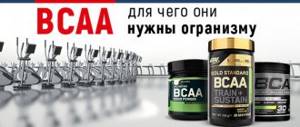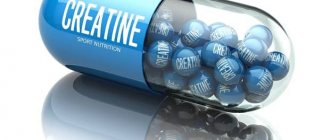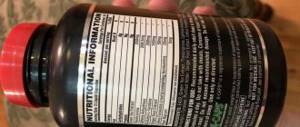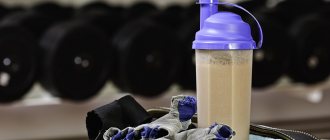What is the difference between creatine powder and creatine capsules?
Sports nutrition manufacturers produce creatine in powder, compressed tablet and capsule form. Each type of finished product has its pros and cons.
The product in capsules or tablets is convenient to take with you to the gym and can be consumed at any time. The powder analogue must be dissolved before use. The finished drink with dissolved creatine cannot be stored for a long time; it must be used within an hour. In addition, before preparation you need to measure the dosage, which creates inconvenience when taking it in the gym.
Creatine in powder form is not completely absorbed. This is due to losses when it enters the stomach, as well as partial loss as a result of incomplete digestion. Creatine in capsules enters the digestive tract without loss thanks to the capsule shell, and is absorbed almost 100%. The effectiveness of powdered creatine is much lower than its capsule counterpart.
The choice of many athletes falls on powdered creatine because of its affordable price. The costs of producing capsules are much higher, so the cost of the finished product is higher.
Since the purity of creatine depends only on the quality of the product, the main differences between creatine powder and creatine capsules are:
- ease of use;
- degree of assimilation;
- price.
Which manufacturer to choose
Unlike other forms of creatine, when choosing monohydrate, it is important to choose the right brand. Why?
- Manufacturer's pricing policy. With the same characteristics of sports nutrition, the price can be completely different just because of the brand.
- Expiration date and delivery. If you purchase BSN creatine, this is not a problem, but if you want to take creatine from Ostrovit, remember that the shelf life of their raw materials is much shorter. For this reason, you should not take creatine in large packaging.
- Availability of a transport system. To reduce the cost of the product, the manufacturer often adds a transport system (glucose molecules) to it. This creatine has greater bioavailability, but less effectiveness due to the concentration of crystals relative to the total mass of the product.
- Crystal purity. Recently, more and more manufacturers have appeared on the market who cannot provide sufficient crystal purification. The bioavailability of their product is significantly lower, which increases consumption and reduces the effectiveness of taking the monohydrate.
- Solubility. This parameter can only be verified experimentally. Despite the statements of all manufacturers that their creatine is ideally soluble in water, practice shows that part of the creatine remains in the form of sediment.
Let's look at the best manufacturers who offer creatine on the market - and complexes containing it.
| The product's name | Manufacturer | Product weight | Price | Editorial rating |
| NO-XPLODE Creatine | BSN | 1025 g | 18 USD | Good |
| NaNO Vapor | MuscleTech | 958 g | 42 USD | Good |
| Micronized Creatine | Dymatize | 500 g | 10 USD | Poorly soluble |
| Micronized Creatine Powder | Optimum Nutrition | 600 g | 15 USD | Good |
| HEMO-RAGE Black | Nutrex | 292 g | 40 USD | Excessively expensive |
| Fierce | SAN | 850 g | 35 USD | Average |
| Creatine Monohydrate | Ultimate Nutrition | 1000 g | 16 USD | Good |
| Cellmass | BSN | 800 g | 26 USD | Average |
Creatine monohydrate for mass gain
Unlike protein, creatine monohydrate acts on muscles differently. Protein is the building material of muscle tissue. Creatine does not increase muscle mass, it accumulates in the muscles, and increases their endurance, gives additional energy and strength.
After taking it, the athlete can train much longer and work with greater loads, this leads to muscle mass building. To make the most effective use of the training process to gain muscle, you should take creatine in combination with a protein or amino acid complex.
Don't miss the most popular article in the section: Laser hair removal on the face and body - how it is done, effectiveness, before and after photos, contraindications.
Classic version
Below we will talk about how to take creatine monohydrate without reference to the manufacturer or form of the product. There are two schemes here:
- No boot mode. This option is recommended for all athletes without exception. Its advantages are ease of administration, minimal risks and the ability to reduce the total amount of supplement consumed. The daily portion is 5-6 grams. In this case, you should take creatine at the following time intervals:
- On days when training is planned, creatine monohydrate should enter the body after exercise. You can take the powder (capsules) together with a gainer, protein shake or amino acid complex. To speed up the absorption process of creatine, it is advisable to drink it with sweet juice (for example, grape juice). Dosage - 5 grams;
- On a day when a workout is not planned, creatine should be taken in the morning. As in the previous case, it should be washed down with sweet juice. Mixing creatine with carbohydrate-protein mixtures, protein and amino acid complexes is allowed.
- Loading mode. If you ask an experienced athlete how to take creatine in capsules or powder, he may recommend the loading option. The main difference is the need to actively take the supplement several times a day, in between meals. The average dosage (day) is 20 grams, divided into four doses. The duration of treatment is 60 days, after which you should rest for 21-28 days.
If a workout is planned during the day, then one of the receptions should be after class. The rules (regarding mixing with drinks and sports supplements) are similar to those described above. In this regimen, creatine is taken for 5-6 days, after which the dose is reduced to 2 grams once a day. Taking time: after waking up (if no training is planned during the day) or after classes. Duration of treatment is 30 days, followed by a break of 21-28 days.
In both the first and second cases, the volume of liquid consumed, which is washed down or mixed with creatine, should be 200-250 ml.
When losing weight
Taking creatine increases performance and endurance, promotes muscle growth, which makes it possible to train longer and more intensely. The larger and stronger the muscles, the more energy they will expend, which means that fat tissue will be burned quickly.
The desired effect can be achieved only if you follow the rules on how to take creatine monohydrate
You need to understand that taking creatine without training will not give any results, because burning fat tissue requires spending a lot of energy.
When drying
Drying is a process during which the fat layer is burned to display the full relief of the muscles. To achieve relief, you need to train hard and spend a lot of energy. And to ensure a long-term training process, taking creatine is perfect.
It must be taken carefully and not overdo it, because creatine causes fluid to accumulate in the muscles, and for a bodybuilder this is an undesirable phenomenon during cutting. However, over time, excess fluid will leave the tissues, but the muscle relief will remain.
Mechanism of action of creatine
The basic unit of cellular energy in our body is a molecule called adenosine triphosphate (ATP). In order for a cell to use ATP, it must first break it down into several smaller molecules, which are then used again to synthesize ATP. One of these substances is of particular interest to us: adenosine diphosphate (ADP). The more ATP our body's cells can store, and the faster they can recover it after use, the more work can be done. This applies to all organs and systems, including muscle cells. Creatine is an integral component of the ATP regeneration process, so increasing its levels increases the amount of work our muscles can do. Specifically, it accelerates the recovery process by “supplying” a molecule that allows the body to quickly convert ADP into ATP, thereby significantly increasing the functionality of our muscles. However, the disadvantage of this system is the natural reserves of creatine in the body, which are very limited. Once these are depleted, our body begins to use glucose and fatty acids to continue producing ATP. However, when you take a creatine supplement, your total body volume increases significantly, with an average increase of 10-20% in your muscles. This provides our muscle cells with much higher levels of readily available energy, which improves anaerobic endurance, strength, energy, and resistance to fatigue and overwork. But the positive effects of creatine on muscles do not end there.
Side effects
Many experiments have been conducted with creatine, and it turned out that side effects occur in less than 4% of cases. It was also found that taking this dietary supplement has a positive effect on muscles: it increases their life and the quality of muscle tissue.
Beginners usually don’t know how to take creatine monohydrate powder correctly. And they are the ones who most often experience side effects. This is due to the fact that side effects arise not only from the drug itself, but also from the drugs and food additives with which it is combined.
Water retention
During the period of taking the drug, water accumulates in the muscles of athletes. This side effect has virtually no negative impact. This is just the body's reaction to the equation of osmotic imbalance.
Due to the accumulation of water in the muscles, a healthy person does not experience any swelling of the face or limbs. An extra 0.5-2 liters of fluid may accumulate in the body, but this is not visible visually; this can only be determined by standing on the scale.
It is very important to drink plenty of water while systematically taking creatine monohydrate. To avoid harm, you should not take diuretics. They will lead to dehydration and complications.
After stopping creatine supplementation, over time, the body will lose about 20-30% of the weight gained as a result of training due to the loss of water from muscle tissue.
Dehydration
Dehydration is directly related to water retention. Creatine leads to osmotic activity in the body, as a result of which part of the blood fluid is transferred to muscle tissue. As a result, the human body becomes dehydrated, which leads to disruption of thermoregulation, metabolism, acid-base balance, etc.
Sufficient fluid intake (about 3 liters per day) makes it possible to restore the electrolyte balance of the internal environment of the entire human body, normalizes other processes and prevents the occurrence of other side effects.
Indigestion
The most unpleasant side effect, which manifests itself as abdominal pain, diarrhea, digestive disorders, flatulence and nausea, is gastrointestinal distress. This phenomenon is associated with the presence of a large volume of slowly soluble creatine crystals in the stomach. Poor product quality and poor cleaning also lead to gastrointestinal distress.
To avoid disruption of the digestive process, you should consume high quality creatine monohydrate. Take the powder or capsules strictly according to the instructions in the instructions.
It is important to avoid overdose. This may cause other side effects.
Cramps and spasms
Since in the process of taking creatine the body is dehydrated and the electrolyte balance is disturbed, spasms may appear in the muscles. To avoid this, you should drink enough water as a preventative measure.
During training with increased loads, muscles experience stress and during the rest period they begin to intensively recover and grow. It can also cause muscle spasms. Cramps are a temporary phenomenon that is not harmful and goes away quickly.
Acne
Athletes who take creatine monohydrate in capsule or powder form may, in rare cases, experience an adverse reaction such as acne.
This is a positive sign, meaning that the body is producing enough testosterone, and the body is rapidly gaining muscle mass. Over time, hormone levels level out and acne disappears.
Side effects on the kidneys and liver
Studies have shown that taking creatine has no effect on the liver or kidneys. It cannot harm even at high dosages (30 g at a time).
Contraindications
Side effects when taking creatine monohydrate are very rare. In addition, it does not have a negative effect and does not disrupt the functions of the body. Despite the safety of the drug, there are a number of contraindications for use.
Creatine is not recommended for use:
- those who have not reached the age of 18;
- women during pregnancy;
- those who have problems with the cardiovascular system;
- people suffering from asthma, diabetes, allergies;
- persons with psychophysical health problems and a tendency to depression;
- people who suffer from epilepsy, arthritis, glaucoma, and prostate disease.
Creatine is prohibited for use by people during the recovery period after surgery, as well as by women while breastfeeding a child.
Don't miss the most popular article in the section: Morning exercises for those over 40, 50. Gymnastics exercises for weight loss, video lessons.
Optimal dosage of creatine
Novice athletes often don’t know how to take creatine monohydrate powder and in what quantities. The dosage of creatine is determined by the drug use regimen. If it was decided to use the drug in loading mode, then you need to take the daily dose in four doses over 5-7 days. The daily norm per 1 kg of body weight is 0.3 g of creatine.
For example, if a person weighs 80 kg, then the daily dose is 80 x 0.3 = 24 g. During the initial loading period, the dosage is so high as to fill the muscles with creatine as much as possible. After intensive loading, it is necessary to maintain the level of the drug in the tissues. To do this, the portion is reduced by almost 10 times. For the same person weighing 80 kg, it will be enough to consume 2.4 g of creatine per day.
If you decide to take creatine without a loading period, then the daily dose is 5-10 g. It is advisable to split this portion into two doses to increase the efficiency of drug absorption.
The concept of cycling creatine comes from the world of steroids. Athletes take steroids cyclically to reduce the likelihood of side effects and minimize the negative impact on the body. Chemical drugs are taken for a certain time, then a break is taken so that the body does not get used to the effects of the drug, otherwise the effect is reduced.
Many athletes also cycle their creatine supplements. In this case, the body is first loaded with creatine for 5-7 days - 15-25 g per day, then the drug level is maintained in portions of 2-5 g per day. After a certain time, a short break is taken, and then loading with creatine begins again.
This principle of intake initially maximally saturates the body with creatine and maintains its level. Then, during the break, the body recovers and resumes the sensitivity of cells to the drug. And then the download starts again. In this case, you can achieve high performance.
If you decide to take the drug without a loading period, then the cycle of taking creatine is as follows: for the first two months you need to take 5-10 g per day, it is advisable to divide the intake into two times, then take a break of 3-4 weeks. When the body has recovered and creatine has practically left the muscles, you need to resume taking it.
Constantly taking creatine in low dosages without a loading period does not make sense. If you take a small dose (2-3 g) every day, then over time creatine will not accumulate in the body, therefore, your performance will not improve and muscle mass will not grow. This is a waste of medication and time.
Methods of using creatine monohydrate
Beginning athletes are often interested in the question of how and when to drink creatine. Some studies confirm that it is best to use it after a workout. This is due to increased blood flow and metabolism, which increases the absorption of the supplement. Drinking before classes is not advisable. On rest days, experts advise taking it not at night, but immediately in the morning. Growth hormone, which at this moment has the highest concentration, improves the absorption of necessary elements. It doesn't matter how you take creatine, before or after meals.
There are several effective dosage regimens that are equally suitable for all people. The form of the additive and its manufacturer do not matter. The effectiveness of each such course, according to research, does not differ. You can choose which option suits you best. Remember that the course of taking creatine should alternate with rest from it. There are two optimal schemes:
- with loading;
- no download;
Taking creatine with loading
With this course, creatine monohydrate is loaded. The bottom line is that you need to take a double dosage of the supplement for the first week. This is necessary to saturate the muscles with this element. Next, we reduce this indicator to the standard amount. This method will allow you to achieve saturation 2-3 days earlier than without loading. You need to adhere to the following scheme:
- first week – 20 g of creatine per day (5 g at a time, 4 times a day);
- then we reduce consumption to 2-3 g per day (maintenance phase);
- It is better to drink it with juice, gainer, protein or other sweet drink.
There is no point in making higher dosages during the loading week, because the muscles will not be able to absorb such volumes. This method has a higher evidence base, a shorter period of saturation, a rapid increase in performance, but increases the risk of side effects and the rate of consumption of the sports supplement. The course lasts a month, after which you need to take a break for 3-4 weeks.
- Registered letter DTI - what is it?
- How to quickly quit smoking at home
- Pain in the lower abdomen in men: diseases of the genitourinary system
No download
The non-loading version of the regimen involves taking the supplement at the same dosage throughout the entire course. It is recommended to consume 5 g of the substance per day along with a gainer, protein shake, juice or sweet drink to increase the efficiency of absorption of the supplement. On training days, you must take one dose after class. On rest days, we take one dose immediately after waking up.
The duration of this scheme is 2 months, after which a break of 3-4 weeks is required. This method has a smaller evidence base, a longer period of muscle saturation with the substance, maximum results are achieved longer, but the risk of side effects is reduced, creatine consumption. Experts say that this scheme is in no way inferior to the loading method.
When losing weight
Creatine retains water in the body, which theoretically interferes with the weight loss process. But this only happens during the period of taking the supplement. Immediately after the end of the course, all excess water will leave the body. While taking it, you increase your strength and train much more energetically, which will allow you to more effectively get rid of fat deposits. As a result, during training, excess weight is burned, and at the end of the course, excess water is lost. Creatine has a positive effect on the weight loss process.
When is it best to take before or after training?
Since the body spends a lot of energy and strength during the training process, after training it begins to recover. Metabolism starts, blood flow improves. This is the best time to consume creatine. It is not advisable to use it before the training process, since creatine causes dehydration, and this can harm the body during exercise.
Taking creatine monohydrate powder before exercise as a component of a pre-workout complex is possible as an exception, then it will be effective. There is also no need to take creatine during the training process, because it can be harmful and significantly complicate the performance of athletic exercises.
Take before or after meals
After many studies, scientists do not give a specific answer when you can take creatine. But most advise taking the drug before meals, since food delays the passage of creatine through the gastrointestinal tract, this increases the time the drug remains in an acidic environment and leads to its damage, and also prevents rapid and complete absorption.
If the drug is taken after a meal, the conversion of creatine to creatinine is practically blocked, since food entering the stomach buffers the acidic environment. Food also promotes the production of insulin, which serves as an excellent transporter of creatine through the gastrointestinal tract.
Determining the right time to take creatine is difficult. But there is a solution. It is best to consume creatine in combination with carbohydrates and proteins. This is the best option for taking the drug.
How long can the course of treatment last?
Most scientists have said that creatine can be taken on an ongoing basis every day. But it is worth understanding that over time the body gets used to the drug , and its effect on the muscles decreases, downregulation of cellular transporters is observed. This phenomenon appears approximately 6-9 weeks after taking creatine.
It is recommended to take creatine for 6-9 weeks and then take a break. For complete recovery of the body and return of sensitivity, 3-4 weeks are enough.
Taking the drug
Anyone who wants to benefit from it should know how to drink creatine powder correctly. Dosage regimens from different manufacturers differ from each other. But there is a scheme that is universal for all types. If you do not exercise on your own and have a personal trainer, he will help you develop an individual program for taking the supplement.
Video
Reception without loading
Taking creatine according to this regimen requires no more than 5-6 g per day. This is a simple teaspoon. If a workout is scheduled on this day, then you need to drink the substance within an hour after performing the exercises. It would be better to mix it with proteins or carbohydrates. On rest days, it is better to take the powder between main meals, as a snack. It can be combined with gainer, protein, amino acids and various juices. Using this regimen, you can use the product for up to 8 weeks, then take a break for a month and then start taking it again.
Reception with loading
Creatine loading involves taking large amounts of the powder in the first weeks. It should be taken several times. In the first week you need to drink a teaspoon of powder 4 times a day. Should be taken between meals as a snack, and on training days, drink one dose immediately after exercise. It can also be combined with gainer, protein or juice. In the following weeks, the dose is reduced to half a teaspoon per day. You need to drink either immediately after exercise or between main meals. The presented course should last 4 weeks, and then you need to rest for 3-4 weeks. Take monohydrate with a glass of water.
How to properly dilute creatine monohydrate
Creatine monohydrate (experienced athletes advise how to take the powder) is diluted as follows:
- to take one serving (5 g) you will need some warm water, about 350-500 ml;
- stir 1 tsp in any container. creatine powder and drink immediately. Do not dilute the drug with hot water. To increase effectiveness, it can also be dissolved in any juice, or in water with honey or sugar.
Thanks to this, sweet food enters the stomach, which causes the secretion of insulin, and it can speed up the absorption of creatine. Some athletes dissolve it in milk, tea or an energy drink.
What to drink with it?
When considering the question of how much creatine to take, we must not forget about the rules of administration. Here it is worth remembering the task of the element, which plays the function of transport from the blood to muscle cells. If you take the supplement with plain water, most of the creatine passes through the body without providing any benefit. To improve the absorption of creatine, the latter must be supplied together with insulin, a hormone with a powerful anabolic effect. As a result, muscles quickly consume active substances coming from outside.
To make taking creatine more effective, you should take it in combination with the following supplements (drinks):
- Amino acid complexes in a volume of 5-15 grams;
- Protein supplements (preferably whey protein). Portion - 20-25 grams;
- Carbohydrates (only fast ones). The best option here is to sweeten the water with regular sugar or drink creatine juice.
As for other transport systems, their effectiveness and positive impact on digestibility is questionable. If desired, you can purchase sports nutrition in which creatine already comes with the transport system. In such a situation, the main requirement is to drink the supplement with a large volume of water to speed up the absorption process.
Do not forget about the influence of a number of additives on the quality of monohydrate absorption. In particular, this can be influenced by the following elements and substances - anabolic steroids, growth hormone, insulin and thyroxine.
What to combine with taking creatine
Taking creatine significantly improves training performance, helps build muscle mass and increases strength. But if you combine it with other types of sports supplements, the result improves significantly.
Protein is a very effective supplement that helps to rapidly build muscle mass . Protein, entering the body, is broken down into amino acids, which are involved in the construction of muscle, bone and cartilage tissue.
Combining creatine and protein will give positive results. For convenient and quick use, you can mix both additives in one container and use immediately.
Combining creatine and gainer also produces results. Since the gainer contains carbohydrates, proteins, many microelements and vitamins, it allows the body to quickly recover after training, promotes intensive growth of muscle mass and fills the body with energy.
This is a high-calorie drug that allows you to achieve excellent results in terms of weight gain in the shortest possible time. Creatine and gainer work well together and increase each other's effectiveness.
Amino acids are an essential supplement for athletes. They have a positive effect on muscle growth, allow the body to quickly recover after the training process, and also reduce pain after training. Amino acid and creatine can be combined. They complement each other and increase the effectiveness of classes.
What can you mix with during use?
Creatine in the form of capsules and tablets is easy to use - here the drug is simply washed down with a glass of water. Sports nutrition in powder form must be diluted in water. The taste of the powder is slightly bitter, so you can add sugar or honey to it. The best option is to dilute it in juice; its absorption together with carbohydrates is much better. But you need to know that not every juice is suitable for this. You should take sweet juices: grape, cherry or sweet apples.
This is important: You cannot dilute the substance in orange juice or grapefruit drink, because excess acid negatively affects the structure of the monohydrate.
The best transport systems are fast carbohydrates or fast proteins (whey protein isolate or amino acids). They have a positive effect on the absorption of carbolic acid, so it is best to mix creatine with gainers that already contain both protein and carbohydrates. To increase the cost, some manufacturers already mix various additives into the drug in the form of carbohydrates, protein, amino acids and others. Try to buy pure creatine and then mix it with whatever you want and in the quantities required for it.
Video
It is forbidden to mix creatine with hot liquid - this will have a bad effect on the monohydrate and then there will be no effect from it. It is also forbidden to drink milk or stir the powder in it. Casein contained in milk is a slow protein that has a bad effect on absorption. Caffeine also has a negative effect on the supplement.
Top 7 rating: which company is better
- Optimum Nutrition - Creatine powder. Creatine produced by Optimum Nutrition is considered one of the best. It constantly ranks top in various ratings and sales. This creatine powder contains no unnecessary additives and consists entirely of creatine monohydrate. Has proven itself well among professional athletes. The price corresponds to the quality;
- Ultimate Nutrition - 100% Micronized Creatine Monohydrate . Creatine from this manufacturer differs from its analogues in its structure. The manufacturer paid attention to the size of the granules and made them micronized. During production, creatine goes through an additional grinding stage. The finished product, which consists of 100% creatine monohydrate, is easily and completely absorbed by the body, especially in combination with juice or other sweet drink;
- Dymatize - Creatine micronized . This creatine also has a micronized structure. There are no shortcomings in the product. This is the perfect combination of price and quality. For little money - high-quality creatine monohydrate without additives;
- MusclePharm – Creatine . This creatine complex has proven itself to be excellent among athletes around the world. The manufacturer offers a patented product, it includes: creatine monohydrate, creatine AAB, malate and two more formulas from MP. The exact recipe is not disclosed and does not make it possible to analyze the theoretical effect on the body. This is a high quality product. Among the disadvantages are the packaging volume of 300 g, and the price is almost twice as high as its analogues;
- Universal Nutrition - Creatine Powder . This is ordinary high quality creatine monohydrate, without additives. Has no disadvantages. The price of the product is acceptable;
- Scitec Nutrition – Attack . This is a creatine complex belonging to the matrix type. It contains a number of additives that complement each other and increase effectiveness. The mixture includes several types of creatine, monohydrate, arginine, ALA, R-ALA, etc. The components contribute to the rapid delivery of creatine to the muscles, which gives endurance when performing strength exercises. The company has released a good product, but it is quite expensive. It is suitable for people who have poor absorption of pure creatine monohydrate;
- BioTech - 100% Creatine Monohydrate . This is the most affordable creatine monohydrate. Some people are concerned about it because of the low price, but in vain. In fact, this is a high quality product without third-party impurities.
General information
Creatine is an amino acid found in red meat and fish. At one time, he made a breakthrough in the field of sports nutrition - he expanded the ability of natural bodybuilders to gain lean muscle mass. Today it is widely used in all strength sports.
What is creatine monohydrate made from? It is produced by extracting protein from fish. Extraction increases the bioavailability of the product by an order of magnitude. Compared to other forms, monohydrate has an optimal balance between price, product consumption and availability.
Which creatine to choose
Creatine is one of the most popular nutritional supplements for athletes. It comes in many forms.
The most common types of additives:
- creatine monohydrate,
- crealkaline,
- creatine ethyl ester,
- creatine anhydrous,
- creatine alpha-ketoglutarate,
- creatine-glutamine-taurine,
- creatine nitrate,
- creatine hydrochloride and many others.
Theoretically, each supplement has its own minor benefits in terms of energy release, storage in muscle tissue, speed and extent of absorption, increased endurance and muscle strength. But all these advantages are only in theory. As the practice of athletes and a number of studies show, there is no better creatine than monohydrate.
Creatine monohydrate is the best option for athletes. It has been studied as much as possible and is considered the safest. In addition, monohydrate is the most affordable in terms of price and prevalence.
What is creatine monohydrate?
Creatine is a natural compound consisting of the amino acids L-arginine, glycine and methionine. Creatine monohydrate is creatine with one water molecule attached to it. The human body can produce this substance naturally, but can also absorb and store it from various foods such as meat, eggs and fish.
Is it possible to drink expired creatine?
Many athletes use expired creatine, and no side effects have been observed. This is because a quality product consists of 100% creatine. There are no additives or supplements in it, therefore, even if the expiration date has passed, nothing will happen to the product, except that its effectiveness will decrease.
It can be consumed even 6 months after the expiration date. But this applies only to high-quality creatine manufactured by trusted companies from Europe and the USA. Although expired creatine is safe, it is best to avoid consuming expired supplements to avoid the risk of negative effects on the body.
Creatine is the most accessible and relatively inexpensive sports nutrition product.
At what age can you drink?
It is recommended to take creatine monohydrate powder starting from the age of 18, since until this time the body independently produces hormones and substances that promote body growth and muscle mass. Until the age of 18, it is better to balance nutrition, rest and training in order to achieve good results.
But every body is different. In some cases, creatine can be used up to 18 years of age. Many studies and experiments have shown that creatine, even consumed by teenagers 14 years old, does not harm the body at all, but quite the contrary. It helps form the musculoskeletal system and build muscle mass. Creatine also helps to recover from injuries and injuries.
Depending on the individual characteristics of the body, creatine monohydrate powder can be taken both after 18 years and before reaching this age. This is the most affordable sports supplement, produced by all well-known sports nutrition companies. It is taken to increase the effectiveness of weight loss, muscle gain, and drying.
The best way to take the drug
It is very important when taking creatine monohydrate to observe the timing of its use - this affects the effectiveness of the supplement. This is done to ensure that sports nutrition is well absorbed. Should I drink it before or after training? Scientists conducted a study and came to a single conclusion: the optimal time to use the supplement is the period after training, but no more than an hour. During this period, metabolic processes in the body are accelerated and blood flow is increased, so the absorption of the supplement is maximum.
Video
It is better not to use the supplement before classes, because it may disrupt the water balance. You can drink monohydrate during pre-workout preparation - this helps increase strength and build muscle. It is prohibited to drink creatine directly during training, because temporary dehydration of the body occurs and this harms the quality of exercise.
This is important: If there are no workouts during the day, then you should drink creatine in the morning. It is at this time that the maximum level of growth hormone is observed in the body. It helps quickly transport beneficial substances to the organs and systems of the body and facilitates the delivery of monohydrate directly to muscle tissue.











